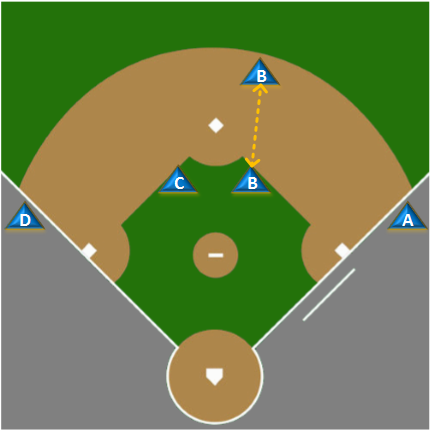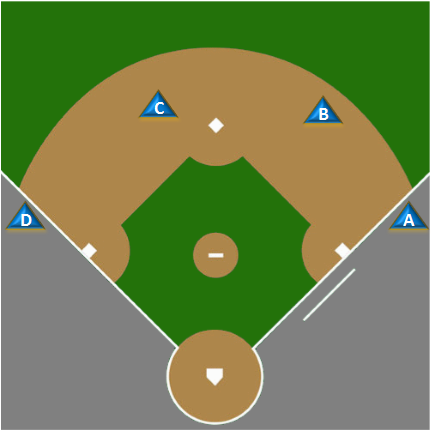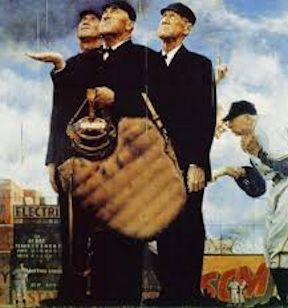 Start Positions (two-man)
Start Positions (two-man)
In this article we discuss the start positions for the base umpire on both the small and big diamonds. But before we go any farther, we need to define some terms:
- Small diamond. Baseball diamond with 60-foot base paths and 46-foot pitching distance. This small field is common for leagues whose players are 12 years old and younger.
- Big diamond. All fields larger than the "small diamond," up to and including the regulation field with 90-foot base paths and pitching distance of 60'-6".
- U1, U2, etc.. Abbreviations for the base umpires. In the two-man system there is only one base umpire, of course: U1. With three- and four-man crews, the number signifies their start-position with no runners on base – U1 near first base, U2 near second base, and U3 near third base. In the three-man system, you have two base umpires, U1 and U3.
- PU. Plate umpire.
On the Big Diamond
There are four start positions on the big diamond, labled A, B, C, and D. For now just ignore D because it does not come into play in the two-man system.
Notice that there are two B positions – one outside the bases and the other inside. We'll talk more about this below, but in brief, you occupy the B position outside the base path with no runners on base. Of course, you can only be in the B position with no runners on base if you are working a four-man crew, so it will not come into play in two-man mechanics.
On the Small Diamond
Similar to the big diamond, are four start positions on the small diamond; these are also labled A, B, C, and D. Again, ignore D because it does not come into play in the two-man system.
Figure 2. Start positions on the small diamond. Run your mouse/cursor over the image to see the fielders superimposed.
Notice that in contrast to the big diamond, all of the start positions are outside of the basepath. The small diamond is just too small to accommodate umpires grouped inside the base paths.
You have to learn this:
You simply have to learn and know instinctively which base-runner configurations require you to be in which start positions. Fortunately, this is really easy to learn:
| With no runners on base | U1 starts in A |
| With a runner on first only | U1 starts in B |
| With runners on first and third | U1 starts in B |
| ALL other configurations | U1 starts in C |
Important: These start positions are the same for both big and small diamond.
Rotations from the Start Positions
The instant a ball is put into play, every umpire on the field goes into motion. The direction in which the umpire goes is determined by that nature of the batted ball – specifically, whether it is a batted ball to the infield, a line drive to the outfield, a fly ball to the outfield, a shot down the foul line, and so forth. Both umpires go into motion, and their movements are coordinated. The coordinated action of the umpires in response to the batted ball is called their rotation.
We discuss these rotations in detail in the next article in the series, The Basic Rotations.

